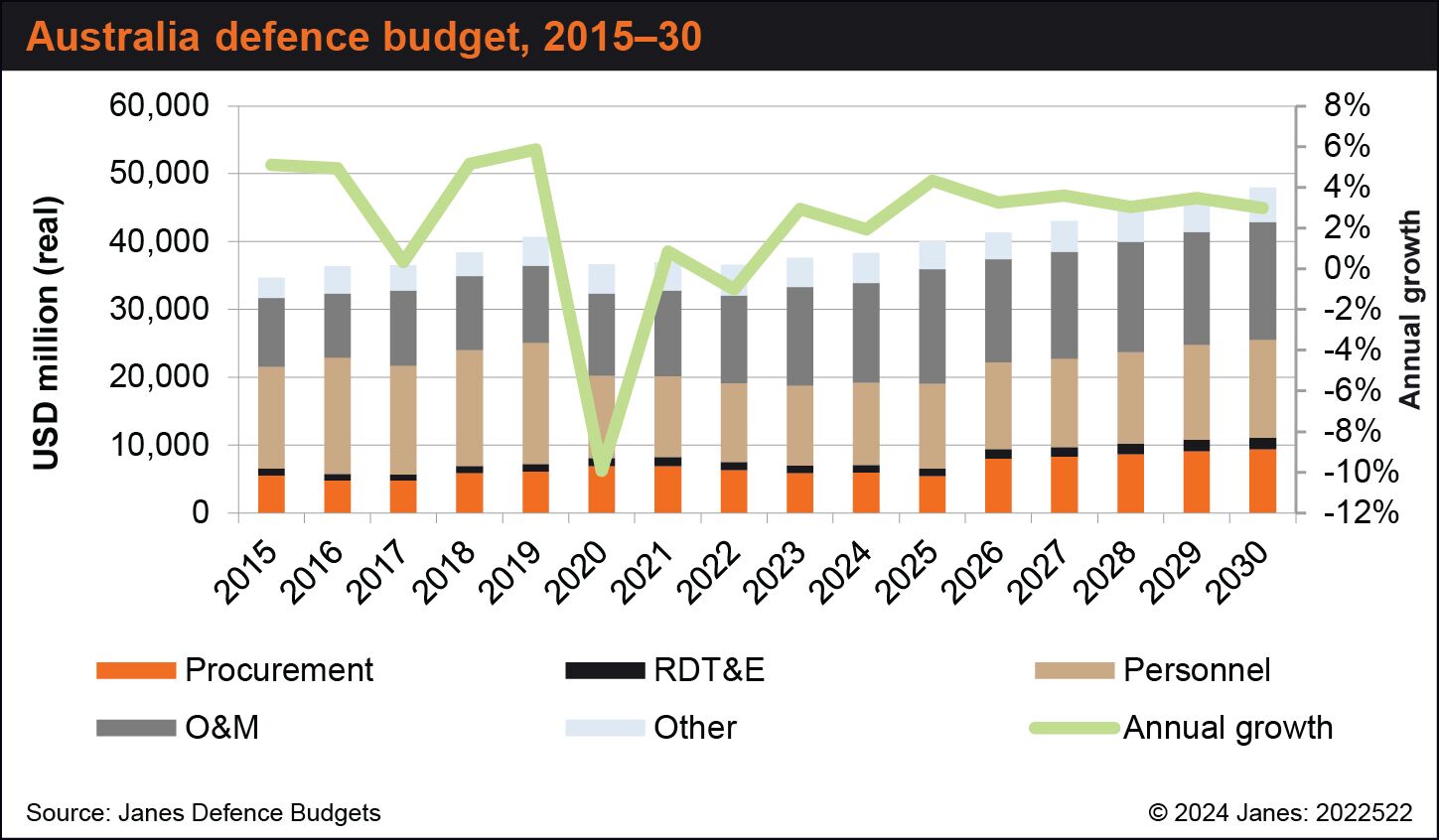
According to Janes Defence Budgets, Australia's total defence spending will rise from the equivalent of about USD38.4 billion in 2024 to nearly USD48 billion by 2030. About 19% of the annual defence expenditure is allocated to procurement. (Janes Defence Budgets)
Australia launched on 29 February a new strategy to enable local industry to meet the future capability requirements of the Australian Defence Force (ADF). The Department of Defence (DoD) in Canberra said the Defence Industry Development Strategy (DIDS) will shape Australia's industrial requirements in line with the Defence Strategic Review (DSR), which was released in April 2023.
“The DSR highlights the challenging strategic environment Australia faces and outlines the vision for [the ADF] to transition to an integrated and focused force,” the DoD said. “Defence industry is essential to delivering this vision. Defence industry supports our national security by delivering and sustaining the capabilities [the ADF] relies on.”
The DoD added that the DIDS establishes the “framework and principles” for Australia's defence industry policy. “These policy settings … deliver the initiatives required to develop Australia's sovereign defence industrial base required to meet our national security requirements,” it said.
In the DIDS, required defence industrial capabilities are identified through seven Sovereign Defence Industrial Priorities (SDIPs) that provide “detail, certainty, and timelines”, said the DoD. “This new level of detail provides industry with information they need to prepare, invest, and deliver on development, production, and sustainment of defence capabilities.”
The SDIPs, which build on similar past DoD industrial initiatives, comprise the maintenance, repair, overhaul, and upgrade of ADF aircraft; continuous naval shipbuilding and sustainment; sustainment and enhancement of ADF land systems; and the domestic manufacture of guided weapons, explosive ordnance, and munitions.
Looking to read the full article?
Gain unlimited access to Janes news and more...
